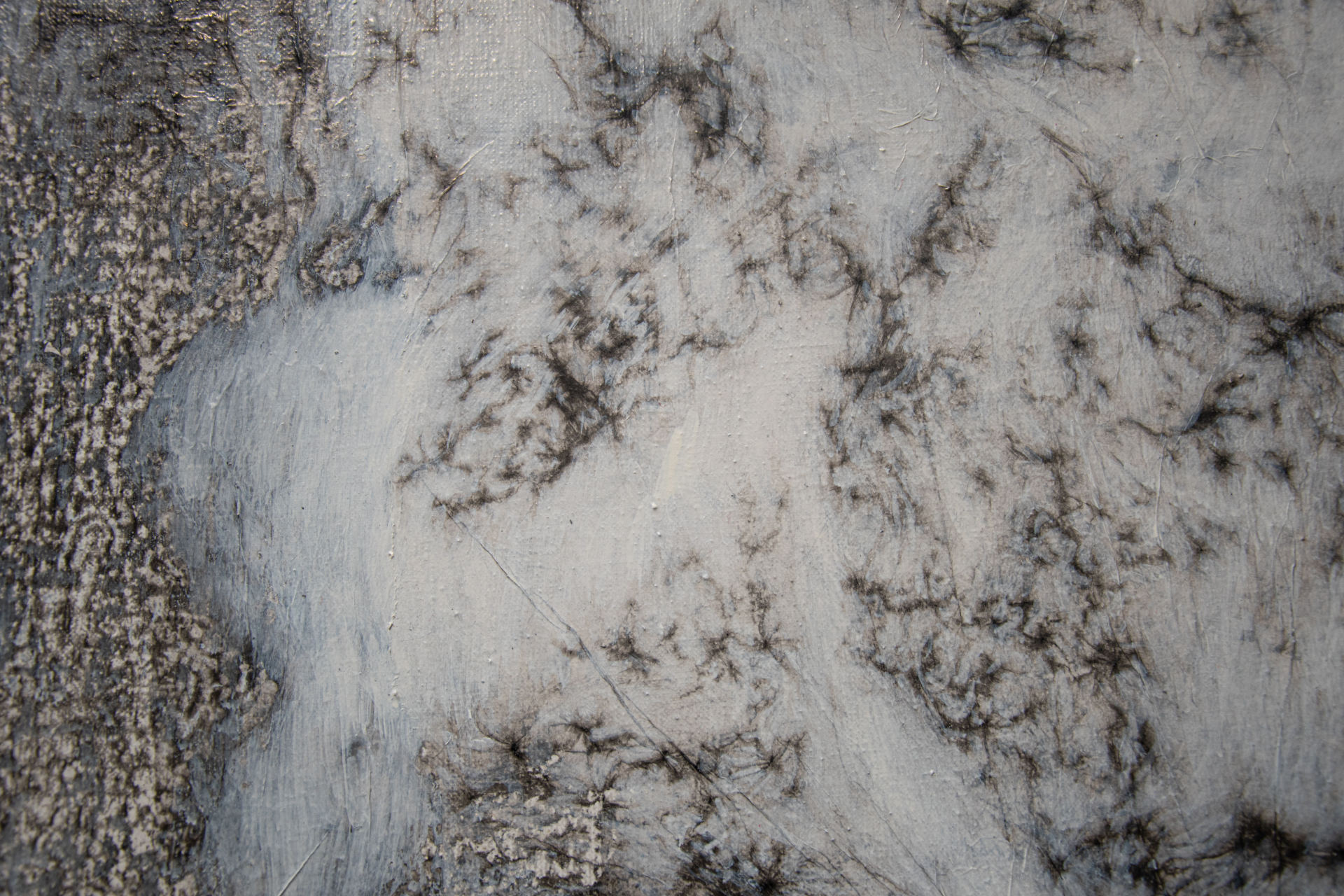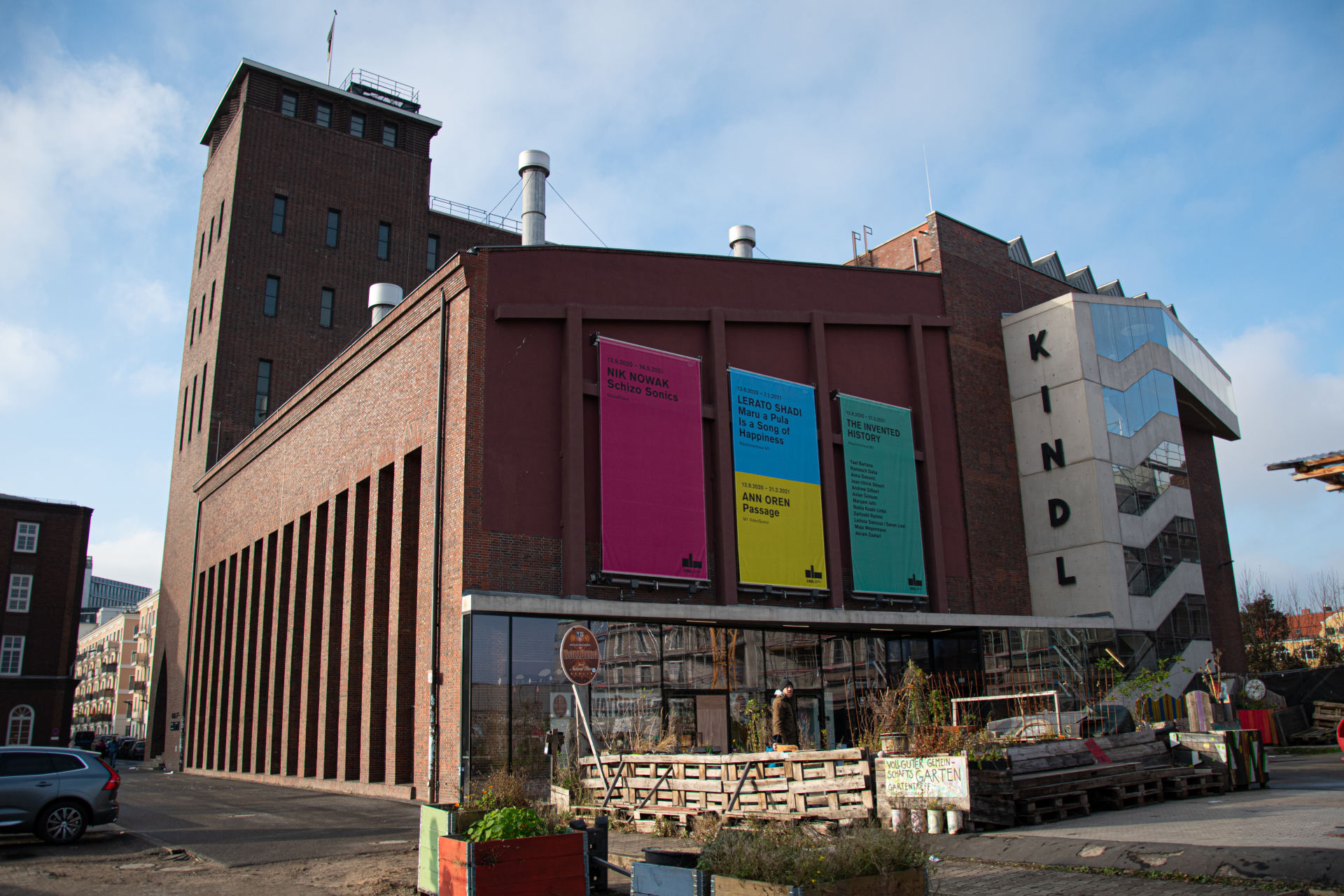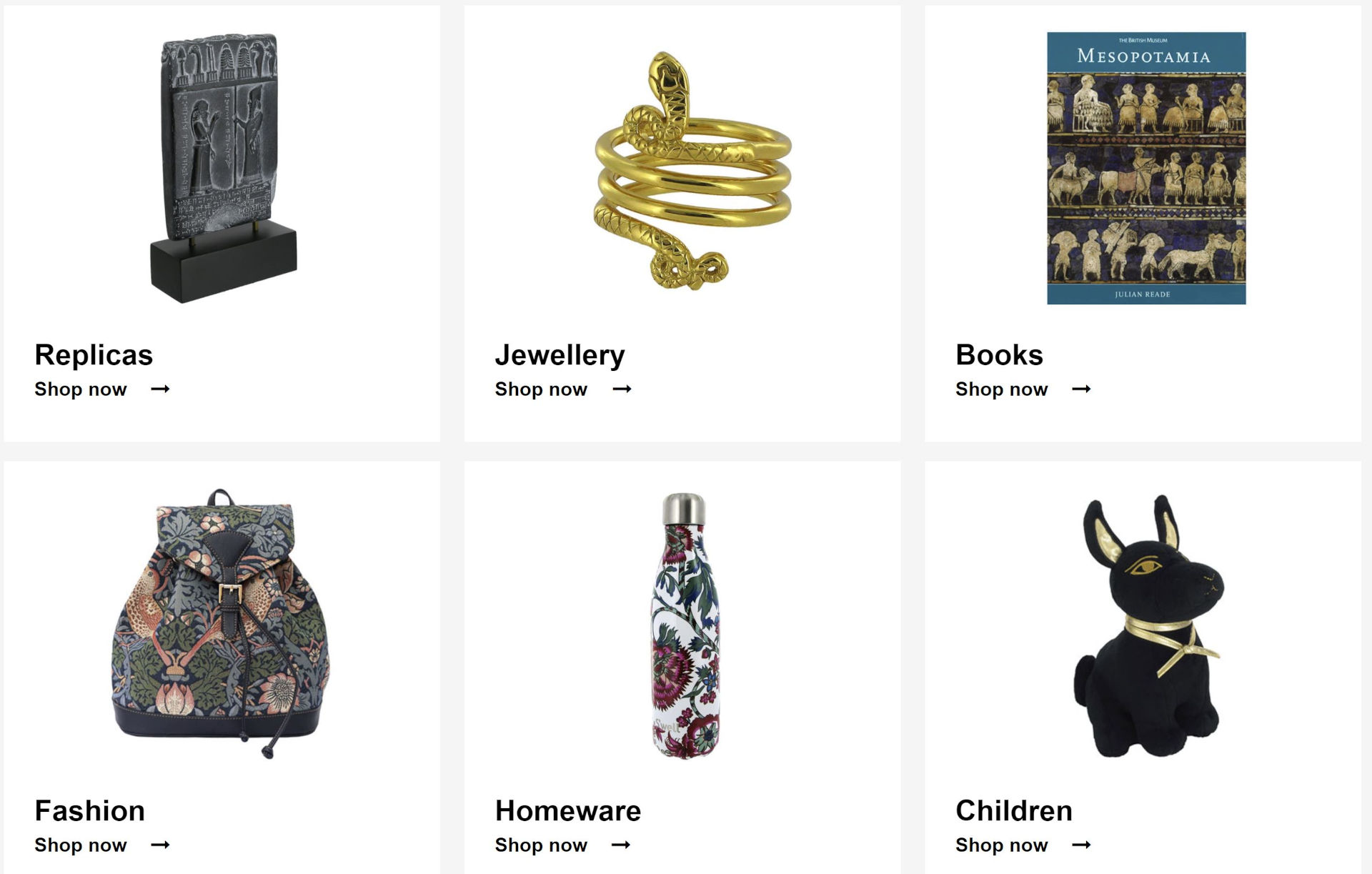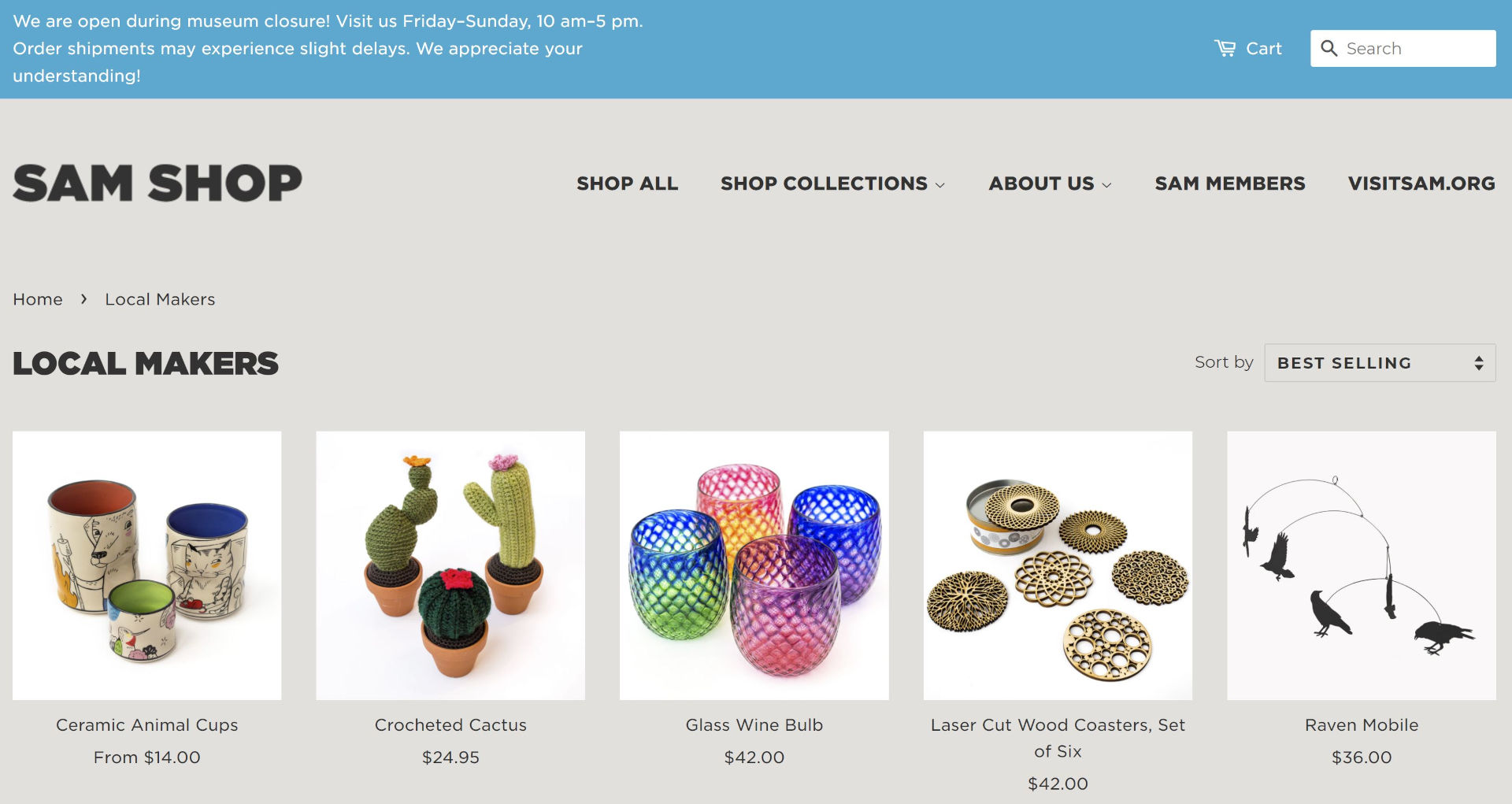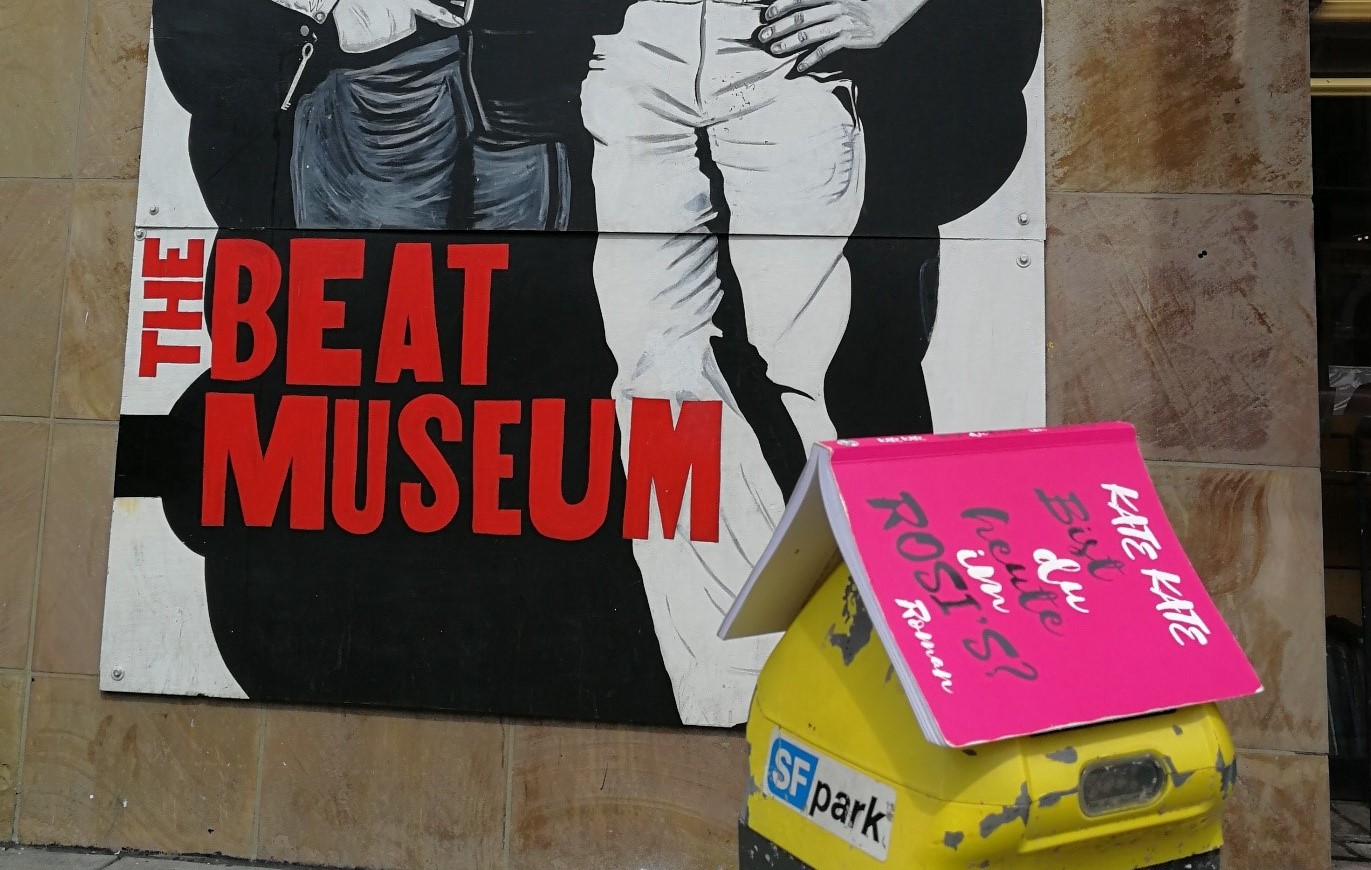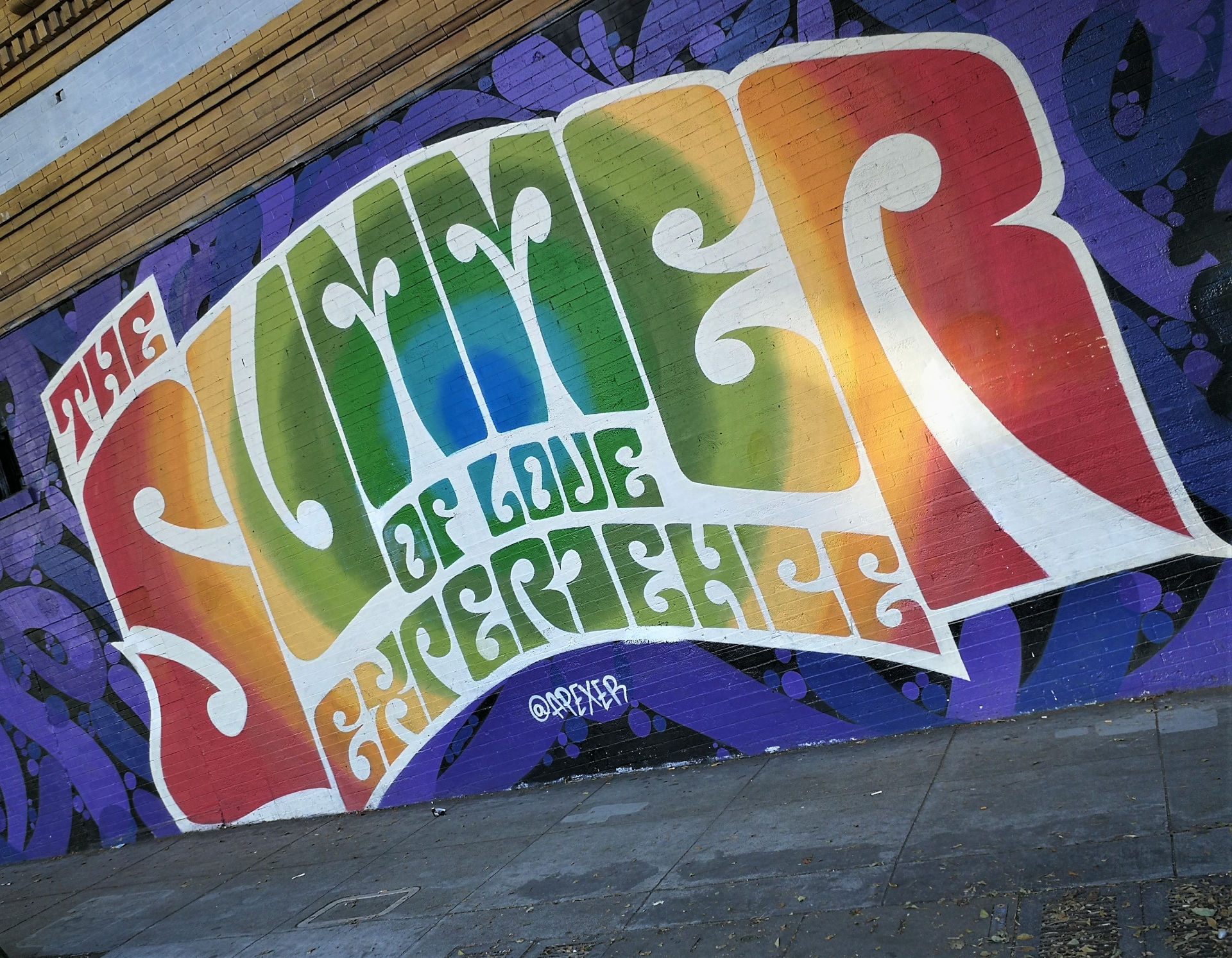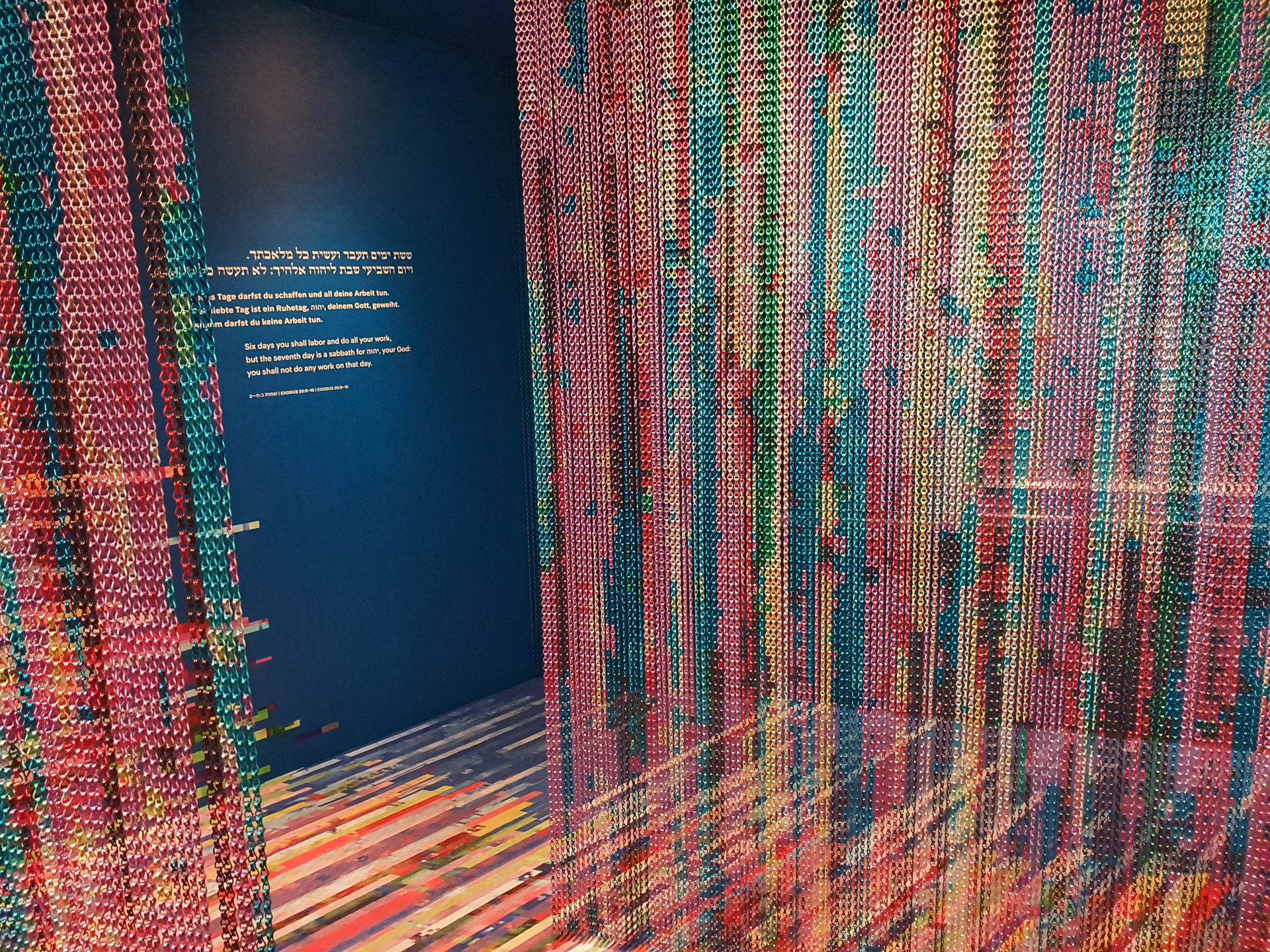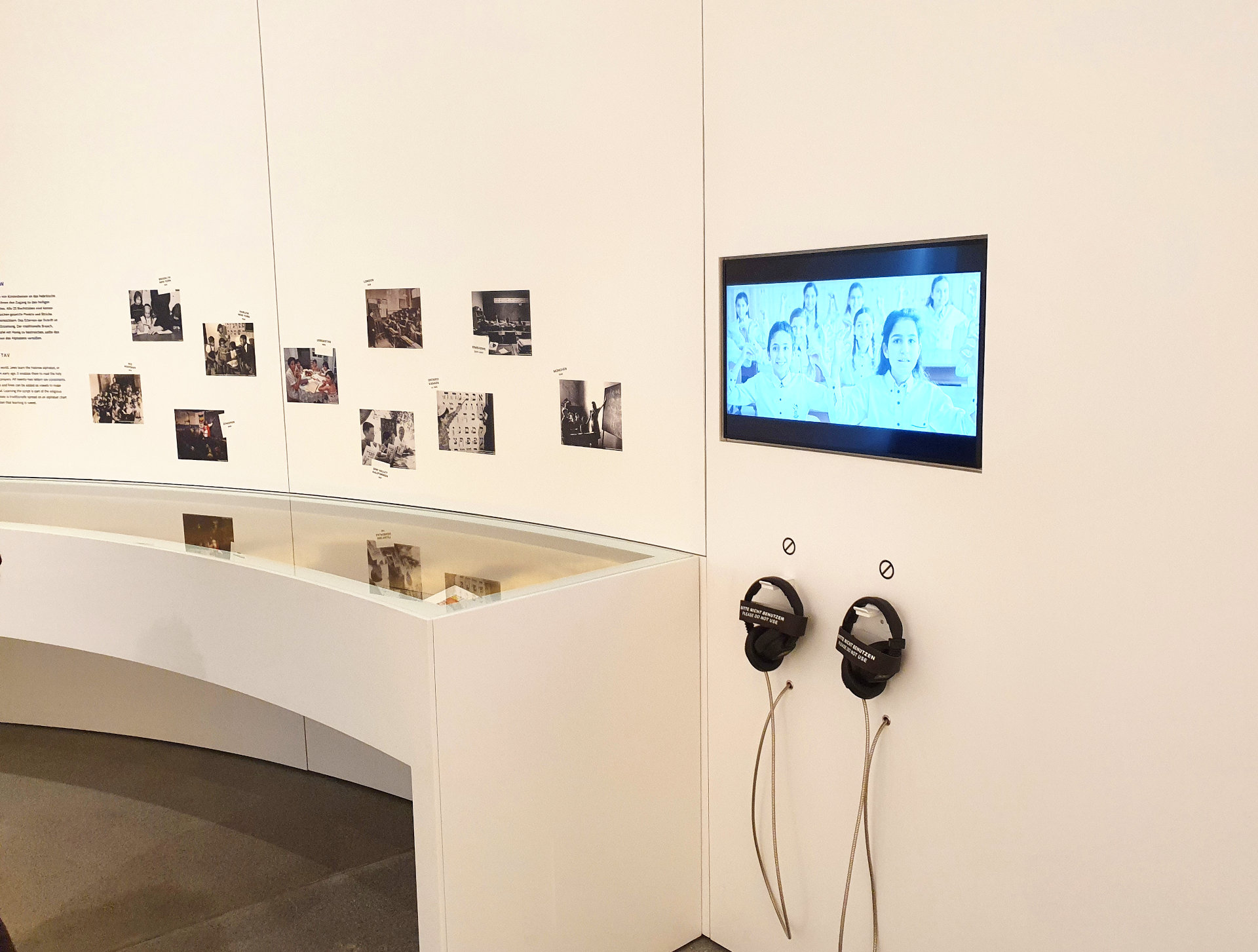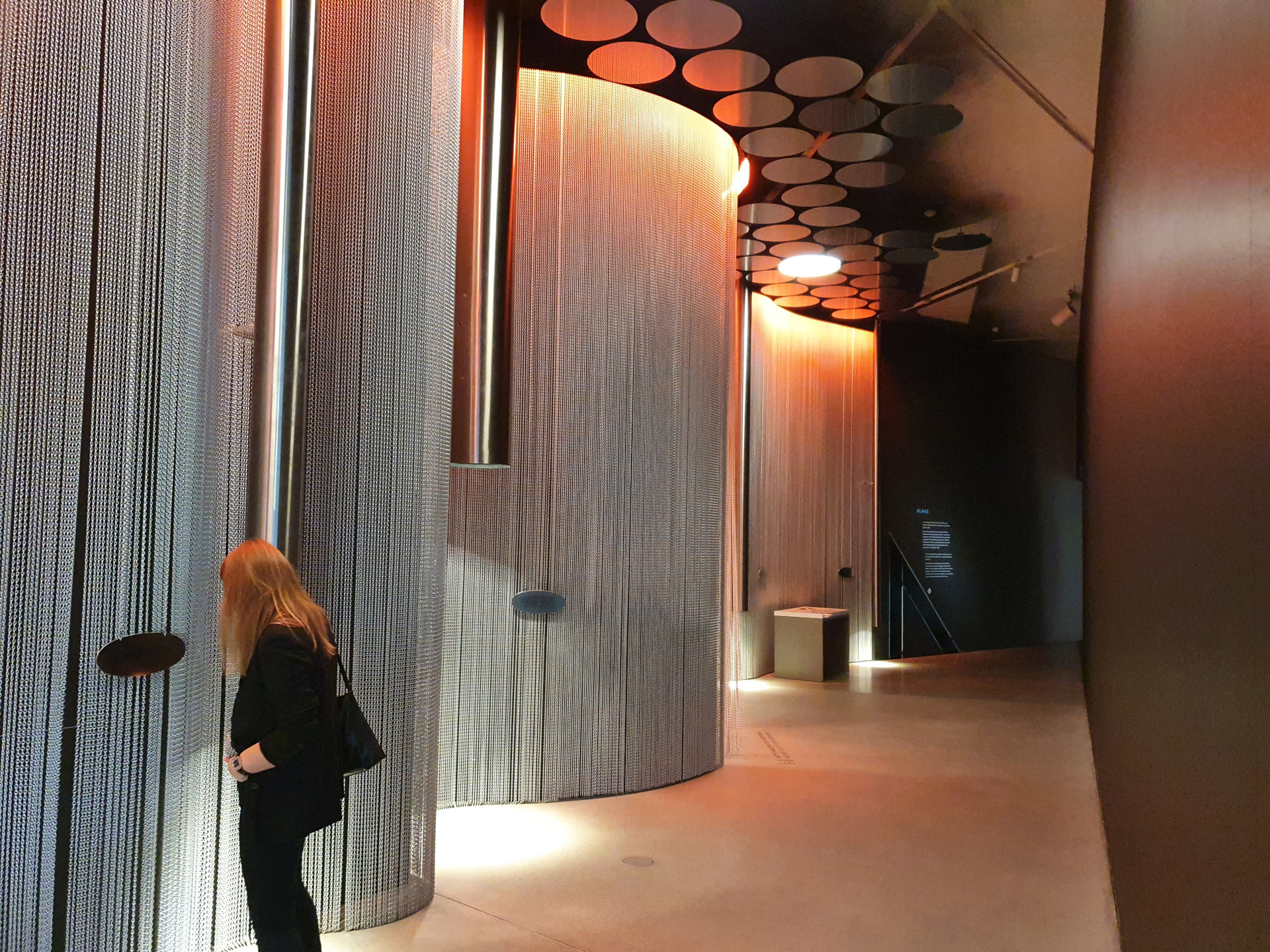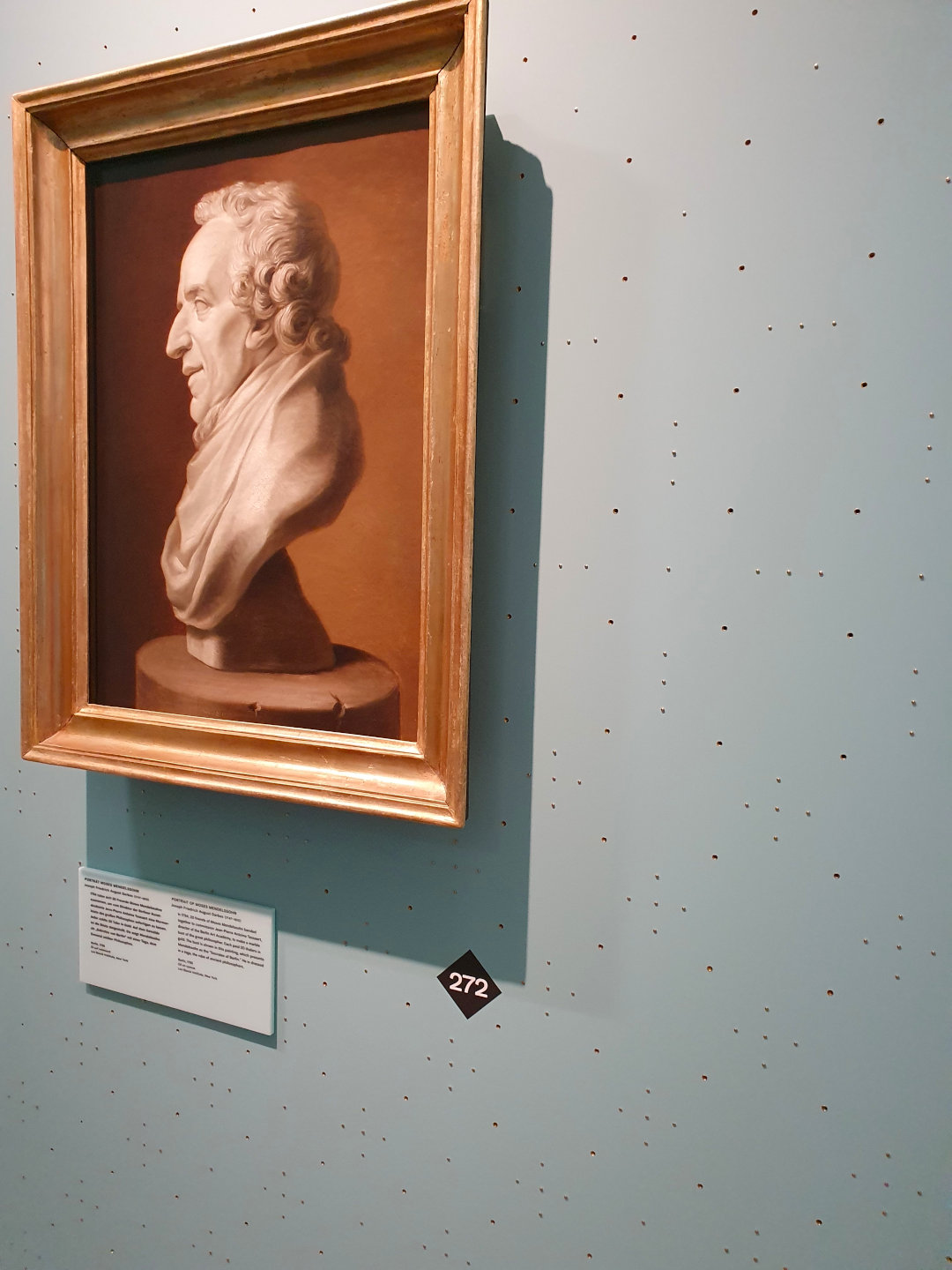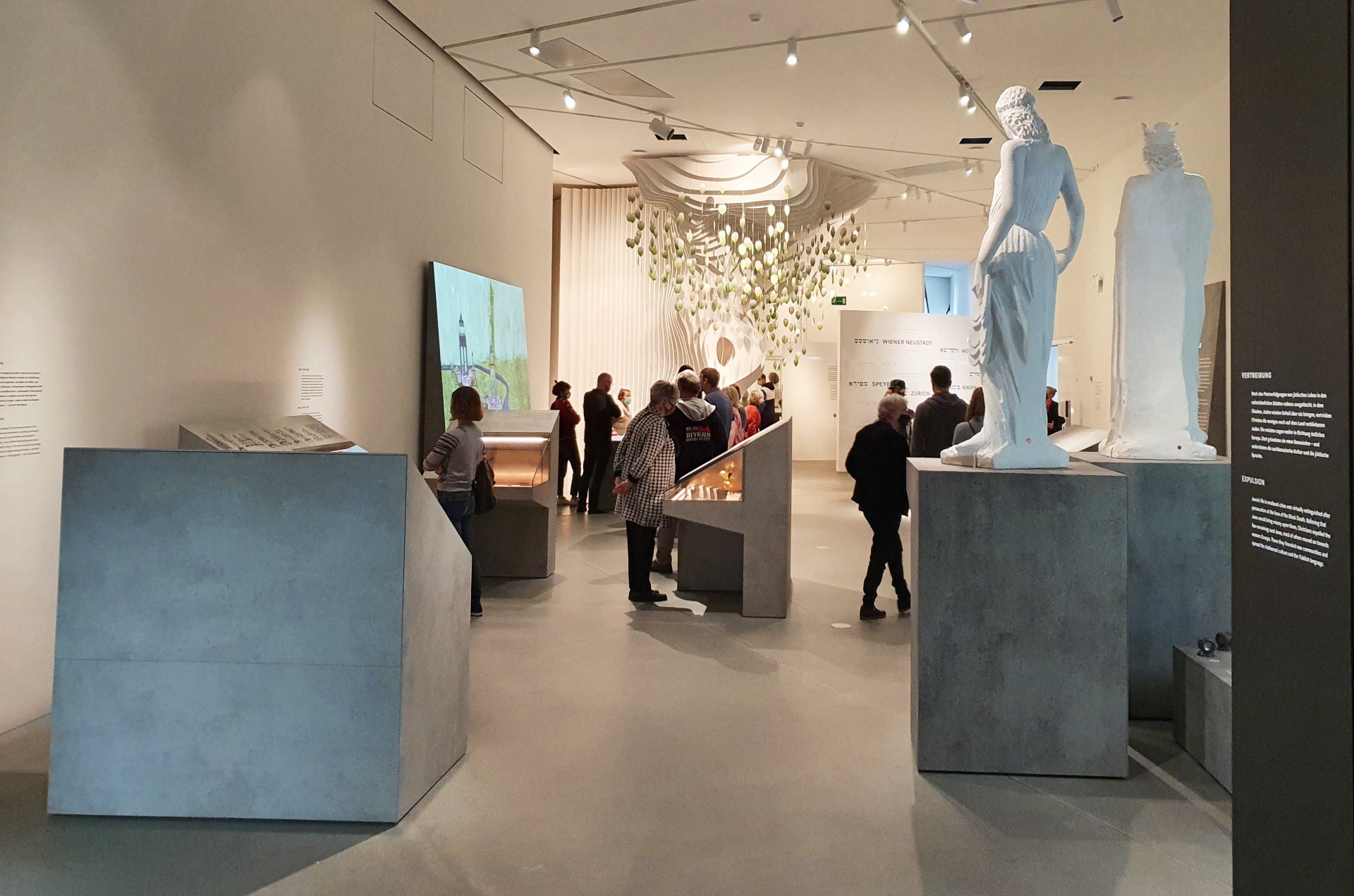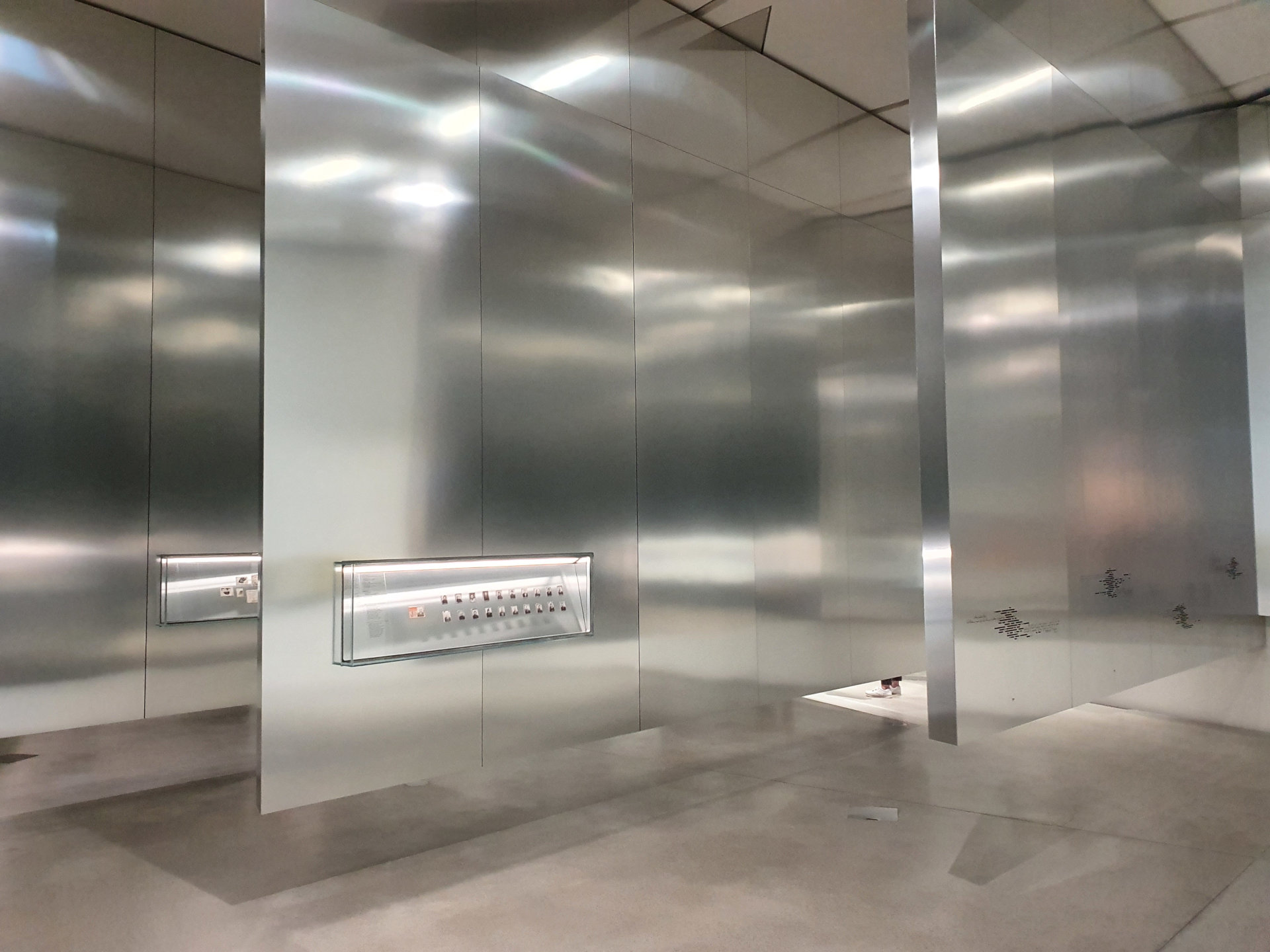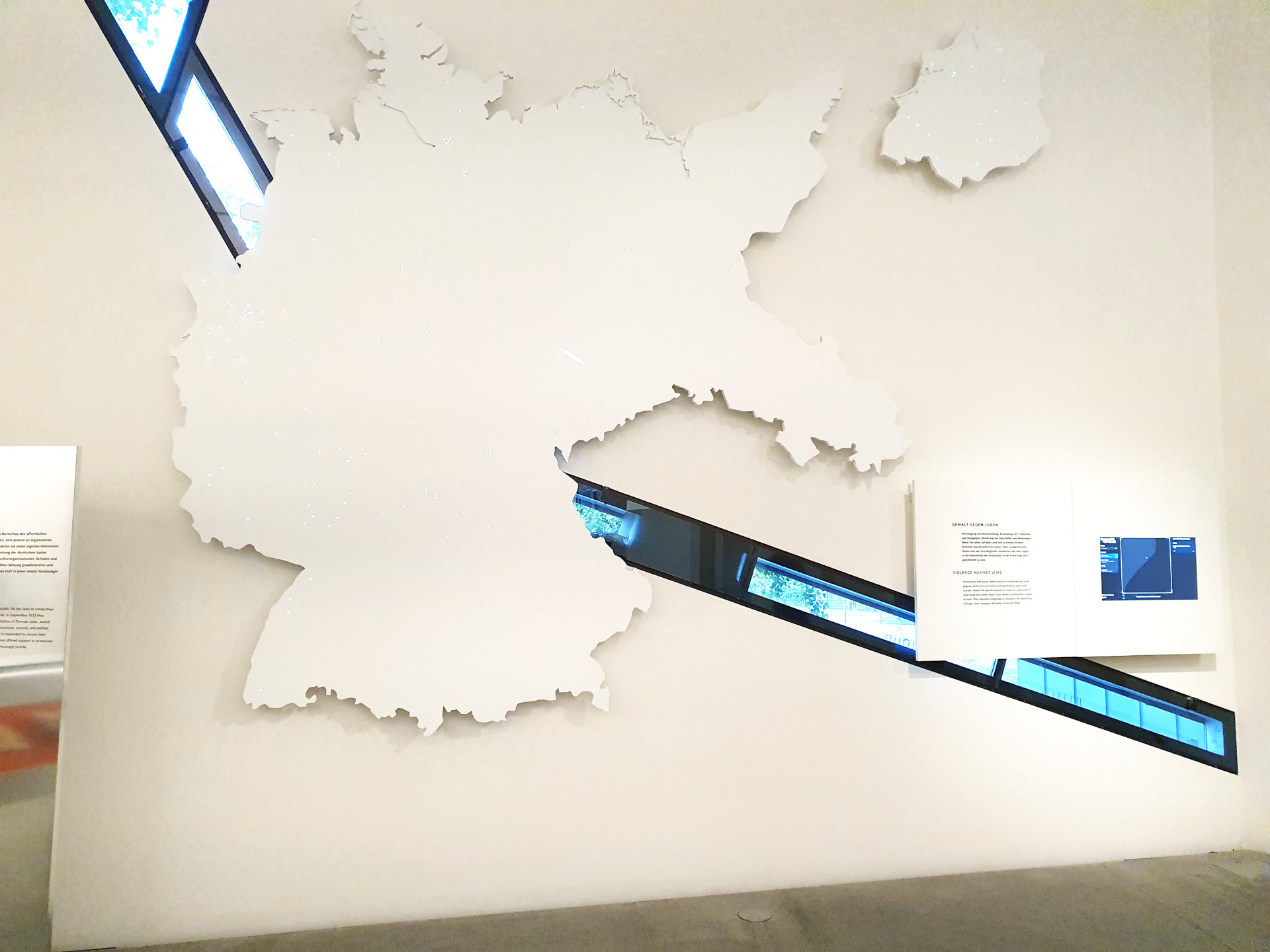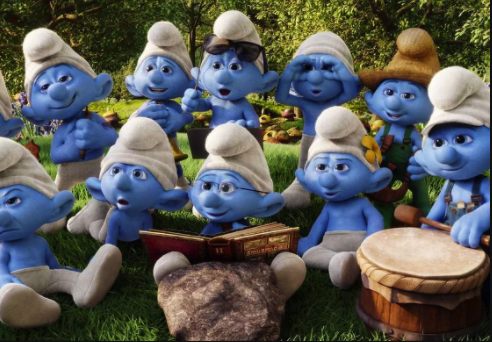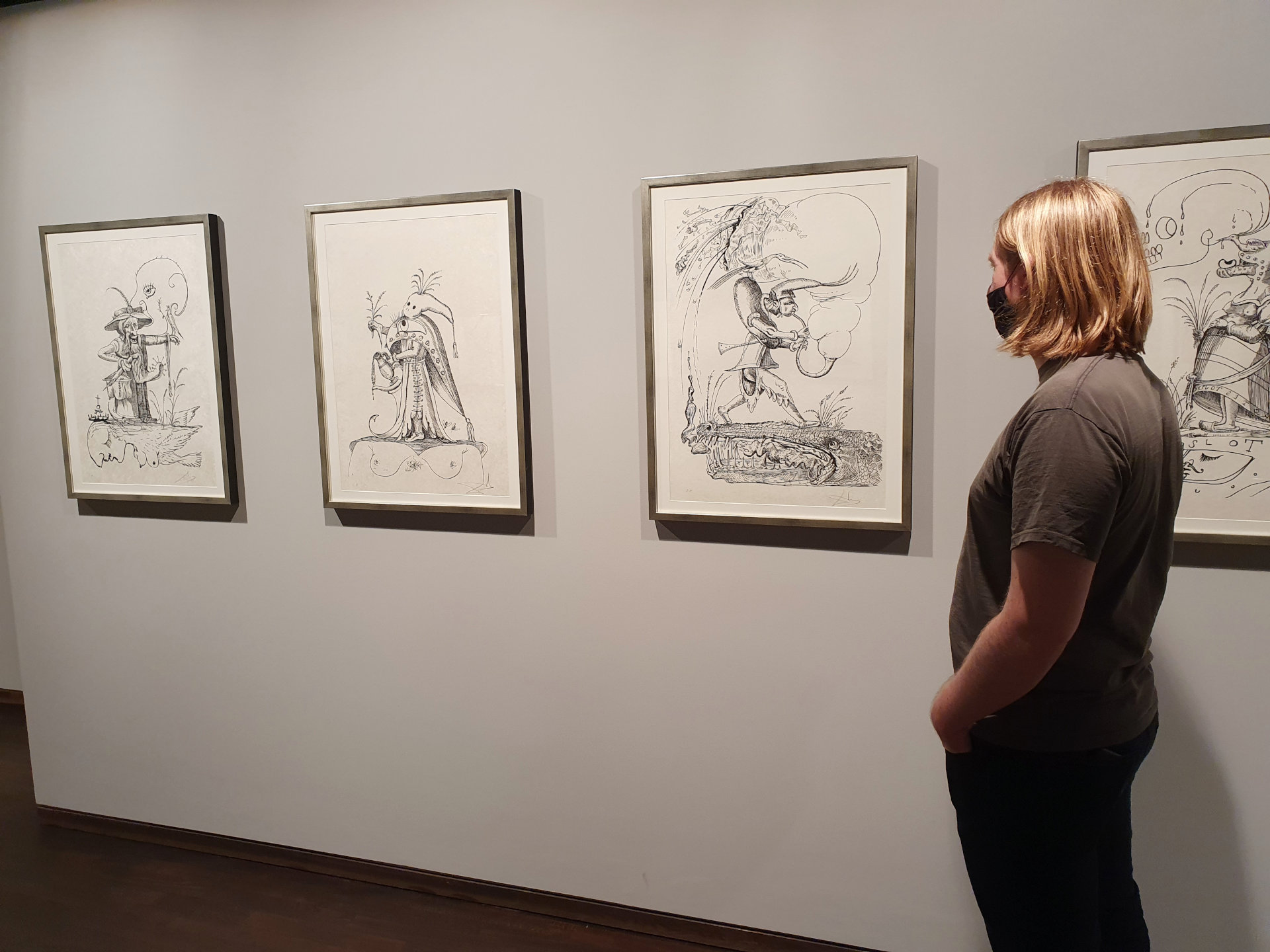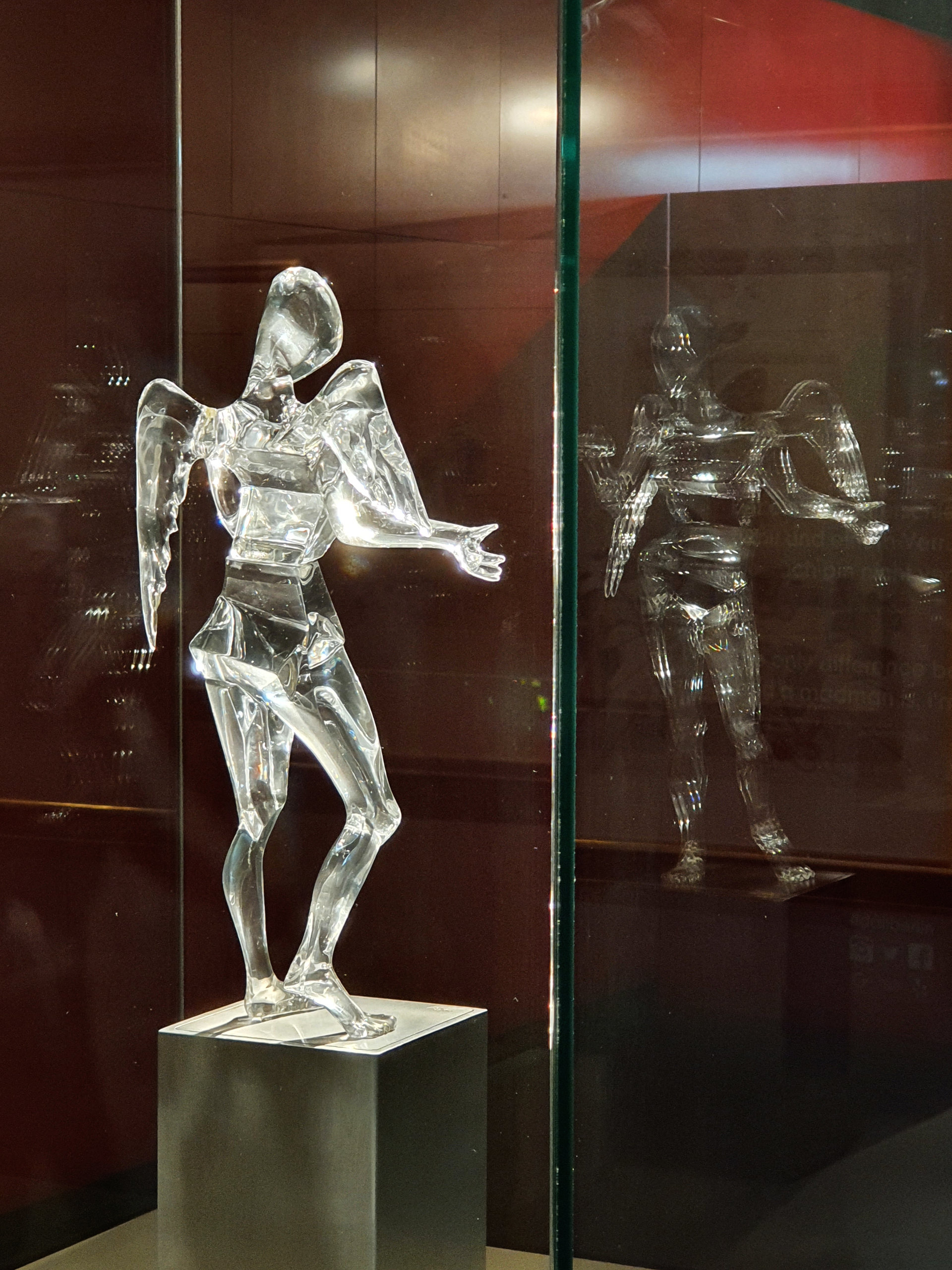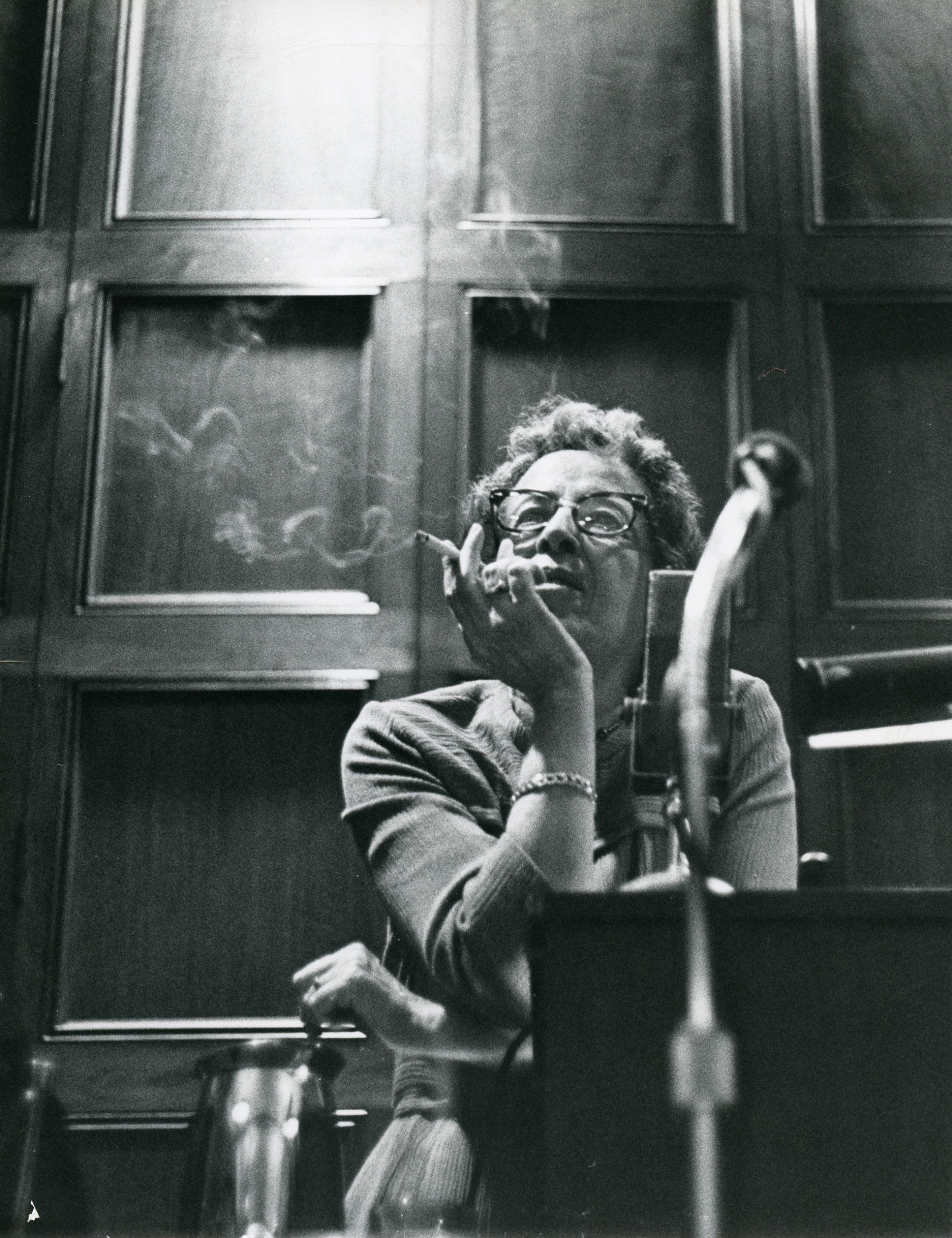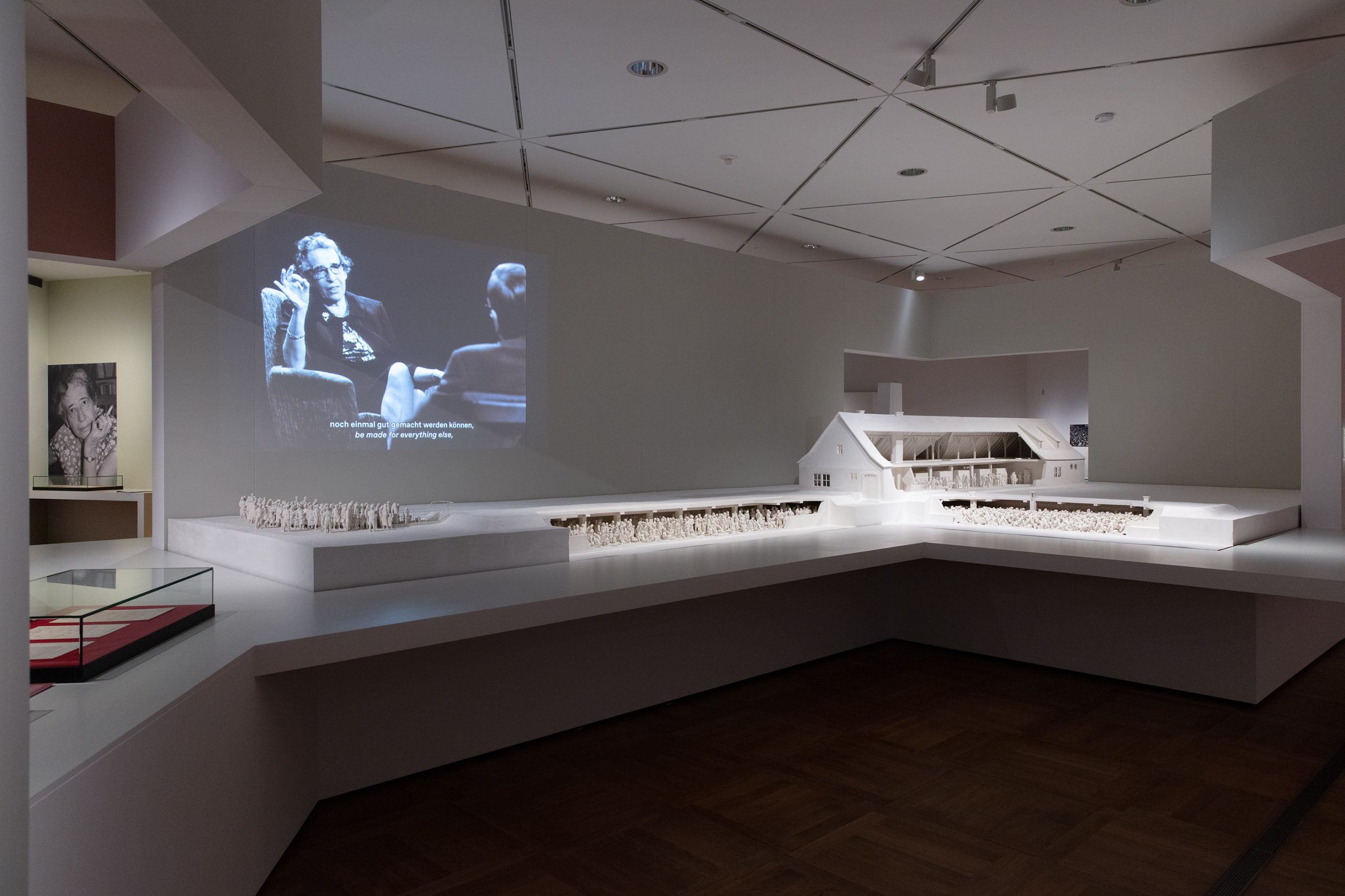Embracing the Digital Museum
Here in Berlin, as in some other parts of the world, measures to combat the pandemic are not only continuing but increasing. So how are museums responding?
By now it’s clear that the pandemic is not going to be short-term. Not only has it been affecting our daily lives for nearly a year, but despite the vaccine on the horizon, it will continue to do so for months to come. Institutions are responding to the mandatory closures in different ways – and unfortunately, most museums are not exactly on the forefront of innovative thinking here. In many institutions there is a hunker-down-and-wait-for-it-to-blow-over mindset that is highly, tragically regrettable.
BUT!
There are some shining lights in the museums landscape: institutions who have embraced the digital to connect with their communities despite the lockdowns. Here are two of my favorites:
Rijksmuseum, Amsterdam
The Rijksmuseum’s admirably visitor-oriented approach is evident just from a first glance at the home page. The top image currently shows a visitor taking a selfie with art in the gallery, and a friend taking a photo of the selfie-taker. Not only acknowledging but encouraging this sort of self-referential, tech-based interaction with the exhibits is unusual among museums! Many tried for a long time, and are still trying, to discourage this sort of modern way to engage with museum displays. But I agree with the Rijksmuseum: you can’t win that battle. And why would you want to? It’s more productive for everyone to respond to visitors’ interests, not try to repress them.
Moreover, the Rijksmuseum has built up its online offerings in numerous ways. You can create your own curated collection of museum objects and share it with others – what a fun idea! And the YouTube channel is full of lively, short videos. I especially liked the one on “Female Leadership.”
Museum für Naturkunde (Natural History Museum), Berlin
One measure of how actively museums are exploring new directions to reach people is simple: are they on TikTok? It might sound laughable, but it is dead serious! In this respect Berlin’s Museum of Natural History is a frontrunner. Its TikTok channel is full of short videos, some made of clips from videos on other platforms, pepped up with cut-out animations and stickers pasted over the top, not to mention of course the ubiquitous music of this platform. Within 1-2 minutes you can learn something significant, and it feels like an accident!
The video tours are also great fun, led by young and charismatic guides (Sebastian Demtröder is a hero!). One video series is formatted like a cabaret/variety show, with the lights turned low and the participants in black eveningwear, doing various acts like drawing, storytelling, and other performances – all about natural history, of course. Although for me the talking parts were a bit long, I absolutely love the idea and especially the fact that the museum is trying such a wild new format!
The museum also made a podcast series – and another one especially for kids! Many of the digital offerings are conveniently listed on one page of the website. It’s all in German so far; maybe they will expand to English at some point to reach further audiences.
What museums do you know that are embracing the digital? Comment below with any other examples you know about!
T-Rex modified from photo by Etemenanki3, licensed under the Creative Commons Attribution-Share Alike 4.0 International license.
Filming The Invented History at KINDL
It was a dream come true to make a video about an exhibition I had fallen in love with. The Invented History, a current exhibition at the KINDL Centre for Contemporary Art in Berlin, was one of the few museum experiences I was able to have during the short time between lockdowns in early autumn. The way this show of innovative contemporary artworks treats the topic of archaeology spoke to me as an archaeologist, but the connection goes even deeper still.
The exhibition thematizes human history as an invented product – hence the title. History is written by the winners, as we’ve heard it said; and regardless of who’s writing, the perspective is subjective. Skewed, you could say. But we can easily forget this when the history appears in textbooks as “fact.” How many textbooks would it take, do you think, to codify a story into accepted history?
This is a topic I discuss repeatedly with my students, hoping to hone their skills for critical thinking. Critical thinking can be hardest when faced with long-accepted “knowledge,” which feels so natural that we hardly think about it at all.
So I was enraptured by this exhibition focusing on exactly this issue. Curator and museum director Kathrin Becker was so kind as to meet with me and discuss the show, including an intimate, exclusive, close-up tour of three special artworks. Take a look at the video and leave a comment with your thoughts – I’d love to hear from you!
Camera and technical work by Modicolitor was indispensible, as always!
Cover image: detail from Nadia Kaabi-Linke, The Altarpiece, 2015.
Have you seen contemporary art deal with history and archaeology, either like this or in different ways? Share in the comments below!
The Best Holiday Shopping in Online Museum Stores
Do you feel it? The holiday season approaching? To measure by the appearance of Christmas cookies in the supermarkets, the approach began in September… But only now is the weather juuuust starting to turn cold, and the talk of Christmas (or the social-distancing lack of it) starting to gear up. The atmosphere is understandably less celebratory and more cautious, or even grinchy, than in other years. But it is still a good time to remember our loved ones and count whatever blessings remain for us.
One of my favorite things, aside from museums, is giving gifts. Even little ones that just mean “I was thinking of you.” They are a gesture of love and a tiny respite from daily travails. And one of the best places to find special presents is a museum shop – this year of course in the online world. There are some good, giant shops out there, but also some hidden gems with unexpected specializations. Here is a roundup of some of my favorites.
Worthy Giants
Perhaps the largest and most well-stocked of the online museum shops are those of The Metropolitan Museum and the British Museum. These are great at stocking items related to the collections, with the objects actually printed onto mugs (Rosetta stone), scarves (Parthenon), or jewelry (Degas dancer pin), or replicas of actual pieces in the galleries (Rodin, The Thinker). Because both museums aim to be “encyclopedic” (a controversial topic for another day!), their shops can be a bit overwhelming – the behemouths in the shopping ring.
Glass for Miles
Another very large contender is the shop of the Art Institute of Chicago. One of their strongest sections is glass objects, although they don’t tout this up front. Beautiful Frank Lloyed Wright drinking glasses and teeny Murano animals (I love the pig) are something to swoon over. But don’t take my word for it – check out the 7 (!) ecstatic reviews of that pig!
American Indian and African American Books
The Smithsonian Museums comprise the National Museum of the American Indian and
National Museum of African American History and Culture. Their shop reflects this in various fine books that are a tribute to these communities. The cultural reads include cookbooks of the Sioux and Mitsitam people, as well as soul food and Afro-vegan cookbooks. More overtly activist are the books of young activist poets, Native American veterans’ stories, and Obama’s latest book. Any of these could deeply impact your life!
Design in XXL
MoMA is world-famous for lots of good reasons. One of them, although less hyped, is the store. It’s just superb. The exquisite taste in home design is matched by the prices, but hey, scrolling is free! Drool cover for your keyboard not included.
I’m the philistine who likes gaudy technicolor light-up glass trees (oh yes!), but maybe you’re more into the heart-rendingly sleek Danish stoneware tableware.
Superb Scandinavian Design
A non-MoMA design winner is out there, however. My eyes popped out at the home design selection of the Moderna Museet shop in Stockholm, Sweden. What is this twisty black-and-white thing? And how much is 175 Swedish kroner, anyway? These mobiles (fish, atom) are the most stylish thing you’ll ever hang from your ceiling, go ahead.
Local Art Spotlight
A great feature of the Seattle Art Museum shop is the section “Local Makers.” What a wonderful way to engage with the local community, to the benefit of maker, museum, and visitor! These corkscrew earrings are stunning (watch out, long-haired wearers).
Puzzle Your Pretzel
I guess I’m not the only one into puzzling these days? Is this a thing now? Want to join in, or encourage the puzzler in your life? The shop of the Institute of Contemporary Art in Boston has you covered. Although some of these puzzles can be found in other museum shops, this selection is the best. I adore the salted soft pretzel puzzle.
Anatomy of Love
A surprise winner for me was the Perez Art Museum Miami (PAMM) shop. Check out this porcelain flower vase in the shape of an anatomically correct human heart! And this Vadge of Honor pin, for that special feminist in your life – and remember, #feminismisforeveryone! This is a socially-aware shop: check out the exclusive PAMM collection, which features books of BIPOC empowerment! (As well as ironic teacups and beach towels.)
What are your favorite online museum shops? Share your tips in the comments below!
Transparency and Inclusion: Do Better!
It’s hardly news anymore that museums across Europe and the USA are currently embroiled in a great struggle. The struggle is about who museums are for, and what museums do to recognize their audiences. Although many institutions do not acknowledge this struggle at all (unlike the omnipresent financial struggle), this by no means makes it go away. To the contrary, it only makes the museums who ignore it appear more lamentably mired within the antiquated power structures and elitism condemned by progressive new movements particularly within the last year.
Two news articles came up recently that make this topic worth reflecting upon again.
Postponing the Philip Guston Exhibition
Several museums planning a traveling exhibition of work by Philip Guston decided earlier this year to postpone the show. The rationale was that the artworks, many of which feature Ku Klux Klan members, are triggering, particularly after the murder of George Floyd. (But there are other, related reasons, well explained in this article.) Like many of the press, I too was suspicious of the decision and feared the worst: museums are once again avoiding responsibility to address the most relevant social issues of our day, seeking instead to preserve their own advantageous position within the ancien regime by simply not talking about it.
But no!
Enter my all-time hero of museum directors, Kaywin Feldman. As head of the National Gallery of Art in Washington, DC, one of the museums organizing the Guston show, she gave a fantastic interview about what is really at stake behind the decision: “I would stress that I’m absolutely committed to doing this exhibition and I believe in Philip Guston. I’m not sure that I would argue that the public needs a white artist to explain racism to them right now. That, combined with the meager track record that the National Gallery has of showing and engaging artists of color, makes it difficult that one of our first major exhibitions about racism is from a white perspective.” Hear hear! Feldman supports this statement by pointing out how the institution is acting on the mandate to diversify, rather than just publishing a letter about it (as many other institutions did). She even mentions working with the gallery security guards to better understand and engage the public! I absolutely love hearing this, because to my mind the museum guards are one of the most undervalued assets of museums worldwide.
This is in keeping with Feldman’s heroic work of previous years, like that presented in her essay “Guerrillas in Our Midst: A Museum Director’s Appeal for a New Feminist Agenda” (in the volume Feminism and Museums: Intervention, Disruption and Change, 2017). It is an inspiring read. If you can’t find the book, get in touch and I can try to help you.
Vandalism on Museum Island, Berlin
The other news item is the recent vandalism in several museums on Museum Island in Berlin. This occurence has been marked by a lack of transparency from start to finish, beginning with the delay of more than two weeks for the story to break into public news. Since then, the museums have published a short online statement with the basic details of the event, but have not addressed their communities in any other way.
I would argue that this horrible act of vandalism offered a chance for the museums to rally supporters to condemn the act with a shared voice. The public is shocked and horrified – why not use that to build solidarity and support for culture, and to send a strong message to both past and would-be perpetrators that society is against their actions? This would be a much stronger message than the dry, burocratic finger-wagging that has been the entire response so far. People want to rally around their museums – museums just need to give them the chance.
The title of this post is taken from the movement of staff at the Guggenheim museum to organize into a union. They adopted the hashtag #DoBetterGuggenheim. This is both a symbol of the need to resist and reform ossified institutions, and a successful example of it starting to work! Comment below with any other examples you know about!
Gastbeitrag aus San Francisco! Kate Kate verliebt sich in die Beatniks (German version)
Willkommen beim neuesten Gastbeitrag aus der globalen Museum Lovers Community! Diese Gastbeiträge bilden eine Art Mini-Tour mit Expert*innen, die ihre Begeisterung für gewisse musealische Themen teilen wollen. Lass uns also unseren Guide kennenlernen:
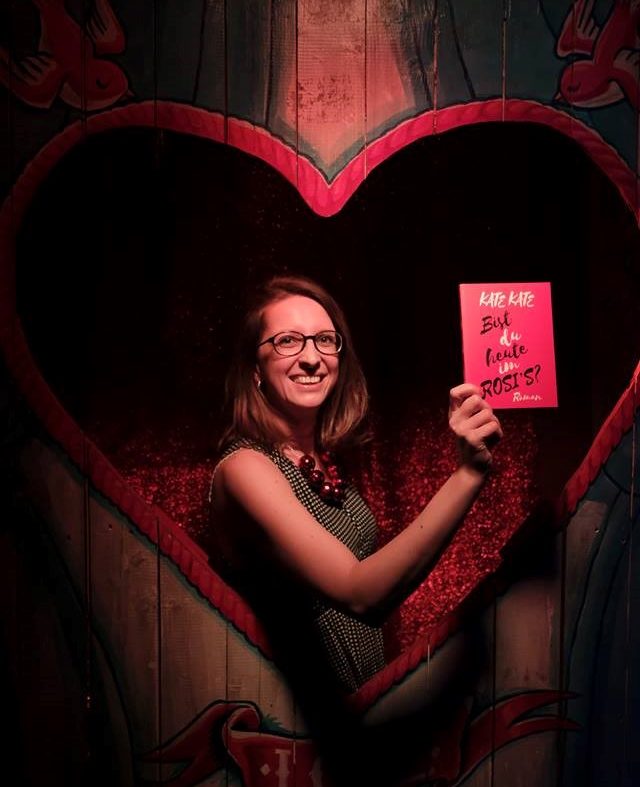
Meet Kate Kate
Kate Kate schreibt. Mit kurzen Artikeln und Texten für die Schülerzeitung über Musik fing alles an. Jahrzehnte später und nach vielen durchtanzten Nächten entstand ihr erster Roman. Ihr ausuferndes Interesse für Musik und Bücher stillt sie nicht nur in Berlin, sondern auch auf ihren Reisen.
Foto: André Fischer
Ich wollte den Pazifik sehen. Ich wollte an die Westküste der USA reisen. Im September 2019 habe ich mir diesen Traum erfüllt. Meine musikalisch-literarische Reise führte mich über Seattle, Olympia, Aberdeen, Seaside und Portland nach San Francisco. The Summer of Love Experience. Ich erlebte meinen eigenen Summer of Travel Experience, in einem einzigen Monat. Als ich in den Flieger nach Seattle stieg, ging ich fest davon aus, die Route wie vorab geplant, abzurocken. Doch der Weg ist das Ziel. Die Ziele hatte ich in einem kleinen Notizbuch aufgelistet, den Weg gab das Navi vor.
Auf einmal befand ich mich auf der Interstate 5. Welcome to California. Am ersten Point of View hinter der Bundesstaatengrenze Kaliforniens schaute ich in die Landschaft und stellte mir die Trapper vor, die ab 1843 in den Planwagentrecks durch die Prärie zogen. Auf der Suche nach neuem Land und Gold. On the road. Um es mit Jack Kerouacs Buchtitel zu sagen. Ich suchte die Wurzeln der Beatliterat*innen und fand sie im Beat Museum in San Francisco.
Der Beat bestimmte schon in meinem Teeniezimmer den Lärmpegel. Wie rebellisch, wie provokant, wie aufmüpfig. Ich wusste, was ein Beat ist und was er auslöst. Ein Wort, das zunächst musikalisch die Wände wackeln ließ. Der lyrische Beat faszinierte mich erst Jahre später als ich mich mit dem Begriff „Beat“ im Studium auseinandersetzte. Denn bevor die musikalische Beatmanie in den 1960er Jahren ihren Höhepunkt erreichte, lärmten Autor*innen einer früheren Beat-Generation auf dem Papier. Die Beatautor*innen gehörten einer eher literarischen als politischen Nachkriegsgeneration an, die neue Ausdrucksweisen schuf, die Sprache der Gosse und Slang-Wörter nutzte, Werke unter Einfluss bewusstseinserweiternder Substanzen schrieb und das auch noch bestätigte. Gedichte und Bücher beschäftigten wegen angeblicher Obszönitäten Rechtsanwälte und Richter. Ich war nicht nur von ihren Werken fasziniert, sondern auch von ihrer Entstehungsgeschichte. In welchen Bars New Yorks oder San Franciscos lernten sie sich kennen? Welche Gedanken und Philosophien ließen sie literweise Bier und Wein trinken? Welcher Küchentisch wurde permanent in Beschlag genommen, um sich gegenseitig zu beeinflussen? Und wie spannend muss es gewesen sein, mit ein paar Münzen in der Tasche durch die USA der 1950ger Jahre zu reisen?
Das Museum wurde 2003 von Jerry und Estelle Cimino in Monterey gegründet. Nachdem die Ciminos John Allen, den Sohn der Beatpoeten Neal und Carolyn Cassady kennenlernten, beschlossen sie, die Geschichte der Beat-Generation jungen Leuten näher zu bringen. Jerry und John stellten eine Show auf die Beine und reisten in einem Airstream-Wohnmobil, dass sie das Beat Museum on Wheels nannten, von Küste zu Küste, von Bundesstaat zu Bundesstaat. 2006 stoppten sie ihr Beatmobil im Viertel North Beach in Frisco. In den 1950er Jahren entstand in North Beach die literarische Bewegung der Beat-Generation mit seinen berühmten Zeitgenossen Jack Kerouac, Allen Ginsberg, Gregory Corso, William Burroughs, Lawrence Ferlinghetti und vielen anderen. Das Beat Museum on Wheels wurde vorübergehend in der Live Worms Gallery (Grant Avenue) eingerichtet und nach einem kurzen Umzug in The Cannery at Fisherman’s Wharf zog das Museum letztendlich in die Räume am 540 Broadway.
Ich startete mit einem Kaffee in der Hand in den Tag und absolvierte ein vormittägliches Fitnessprogramm auf dem Weg zum Museum. Hügel rauf, Hügel runter und nach 20 Minuten empfing mich das Museum mit einem übergroßen Wandplakat, auf dem sich die Freunde Neal Cassady und Jack Kerouac lässig brüderlich auf die Schultern klopfen.
Im Museumshop kaufte ich ein Ticket zu einem äußerst moderaten Preis und ging durch das kleine Drehkreuz. Im Erdgeschoss und in der ersten Etage ist eine Vielzahl an Beat-Memorabilien ausgestellt, darunter Originalmanuskripte, Briefe, Notizzettel, Postkarten, Bücher, Schreibmaschinen, Fotografien oder Gingsbergs Orgel. In einem separaten schmalen Raum schaute ich mir zunächst einen Dokumentarfilm über die Beat-Literat*innen an, der in Endlosschleife vorgeführt wird.
Schriftstellerinnen der Beat-Generation wie Diane Di Prima, Jan Kerouac, Carolyn Cassady, Anne Waldman oder Joyce Johnson werden in mehreren Vitrinen vorgestellt. Frauen, die in den Vereinigten Staaten der Nachkriegsjahre mehr von ihrem Leben erwarteten. Sie wollten nicht als zarte Wesen wahrgenommen werden, die verheiratet und wohlsituiert in einem Vorort lebten. Jahrzehnte vor den feministischen Bewegungen der späten 1960ger und 1970ger Jahre ließen sie sich nicht von den strikten gesellschaftlichen Normen einfangen und in Rollenbilder zwängen. Die Beat-Literatinnen waren sozusagen die Vorkämpferinnen, die die Brücken zur nächsten Generation bauten.
Eine alte Schreibmaschine meiner Mutter, eine Urania-Piccola, stand jahrelang als Dekoration im Wohnzimmer. Niemand tippte darauf. Als ich das Alphabet beherrschte, hämmerte ich auf ihr rum. Der Klang, wenn die Typenhebel auf das Papier aufschlugen, hörte sich genauso schwer an, wie es das Herunterdrücken der Tasten war. Die Urania wog gefühlt 1.000 kg. Die Beatniks tippten unter anderem auf einer Underwood Typewriter Nr. 5 oder L.C. Smith Corona. Die Schreibmaschinen waren reisetauglich, meine nicht.
Die Bild- und Objektbeschriftungen, die an den Wänden hängen und in den vielen Vitrinen liegen, sind wunderbar zusammengestellt, die Texte informativ und auf den Punkt. Glücklicherweise erreichte das Aufnahmevermögen meines Smartphones die volle Auslastung und hielt mich so davon ab, jedes Schild und jedes Ausstellungsstück zu knipsen.
Das Beat Museum ist ein kleines Juwel und hat eine vergangene, viel besprochene und beschriebene Zeit mit vielen seiner Vertreter*innen hervorragend eingefangen. Es wird eine Generation festgehalten, die einen gesellschaftlichen Wandel, eine soziale und sexuelle Befreiung einläutete und nachfolgende Generationen beeinflusste. Ich empfehle, sich für das kleine und sehr intime Museum so viel Zeit wie möglich zu nehmen. Die Beat-Generation war nur eine kleine Gruppe von Autor*innen und Künstler*innen, die ein Bohèmeleben ausprobierte, sich „Beatniks“ oder auch „Hipster“ nannten, Jazz hörte, mit Drogen experimentiere und neue Lebensweisen einschlug. Eine künstlerische Bewegung mit einer hohen Strahlkraft, die in dem wunderbaren Museum großartig vorgestellt wird.
Guest Post San Francisco! Kate Kate falls in love with Beatniks
Welcome to the latest in a series of Guest Posts from museum lovers around the world! Each post is like a mini-tour with an expert on a museum topic they’re excited about. So let’s get to know our guide:

Meet Kate Kate
Kate Kate writes. It all began with short articles and texts about music for the school newspaper. Decades later and after many nights of dancing in several clubs, she wrote her first novel. She cultivates her overflowing interest in music and books not only in Berlin, but also on her travels.
Photo: André Fischer
I wanted to see the Pacific Ocean. I wanted to travel to the West Coast of the USA. In September 2019 I made this dream come true. My musical and literary journey took me via Seattle, Olympia, Aberdeen, Seaside and Portland to San Francisco. The Summer of Love Experience. I had my own Summer of Travel Experience, in a single month. When I boarded the plane to Seattle, I assumed that I would definitely ‘rock‘ the route as I had planned. Doch der Weg ist das Ziel. That means “It’s not where you’re going, it’s how you get there.” I had listed the destinations in a small notebook; the route was determined by the navigation system.
All of a sudden I found myself on the Interstate 5. Welcome to California. At the first lookout point behind the state border of California I gazed into the landscape and imagined the trappers, who moved through the prairie in the wagon trains from 1843 on. In search of new land and gold. On the road. To use Jack Kerouac’s book title. I was searching for the roots of the beat authors and found them in the Beat Museum in San Francisco.
When I was a teenager, the beat already dominated the noise level in my room. How rebellious, how provocative, how defiant. I knew what a beat was and what it triggered. A word that made the walls shake – musically, at first. Only years later was I fascinated by the lyrical beat when I began to deal with the term “beat” in my studies. Because before the musical beat mania reached its peak in the 1960s, authors of an earlier beat generation made noise on paper. The beat authors belonged to a post-war generation that was more literary than political, created new ways of expression, used the language of the streets and slang words, wrote under the influence of mind-expanding substances – and even admitted it. Poems and books kept lawyers and judges busy with their alleged obscenities. I was fascinated not only by the books, but also by the history of their creation. In which New York or San Francisco bars did the poets meet each other? What thoughts and philosophies led them to drink gallons of beer and wine? Which kitchen table did they permanently requisition as their debate stage? And how exciting must it have been to travel through the USA of the 1950s with just a few dimes in your pocket?
The museum was founded by Jerry and Estelle Cimino 2003 in Monterey. After the Ciminos met John Allen, the son of beat poets Neal and Carolyn Cassady, they decided to share the history of the beat generation with young people. Jerry and John created a two-man-show and travelled from coast to coast, state to state. Jerry, John and Estelle travelled in an Airstream camper van, which was called the Beat Museum on Wheels. In 2006, they stopped the ‘‘Beat Mobile” in the North Beach district of Frisco. In the 1950s, North Beach was the birthplace of the Beat Generation literary movement with its famous contemporaries Jack Kerouac, Allen Ginsberg, Gregory Corso, William Burroughs, Lawrence Ferlinghetti and many others. The Beat Museum on Wheels was temporarily set up in the Live Worms Gallery (Grant Avenue) and after a short move to The Cannery at Fisherman’s Wharf, the museum finally moved into the space at 540 Broadway.
I started the day with a coffee in my hand and completed a morning fitness program on the way to the museum. Up a hill, down a hill; and after 20 minutes the museum welcomed me with an oversized wall poster on which friends Neal Cassady and Jack Kerouac casually pat each other on the back in a very brotherly way.
I bought a ticket at a very moderate price and went through the small turnstile. On the ground and the first level a variety of beat memorabilia is on display, including original manuscripts, letters, notepads, postcards, books, typewriters, photographs – and Ginsberg’s organ. First, in a separate narrow room, I watched a documentary film about the beat authors, which is played in an endless loop.
Female writers of the Beat Generation like Diane Di Prima, Jan Kerouac, Carolyn Cassady, Anne Waldman or Joyce Johnson are presented in several vitrines. Women who, in the post-war United States, expected more from their lives than just to be considered just a tender soul, married, and living well-off in a suburb. Decades before the feminist movements of the late 1960s and 1970s started, they did not allow themselves to be caught up in the strict social norms and forced into traditional roles. The female Beat writers were, so to speak, the pioneers who built bridges to the next generation.
An old typewriter of my mother’s, an Urania Piccola, was used for years just as decoration in the living room. Nobody typed on it. Once I had mastered the alphabet, I hammered away on it. The sound when the type levers hit the paper sounded exactly as hard as pushing the typewriter keys down really was. The Urania felt like it weighed 1000 kg. The beatniks typed on an Underwood Typewriter No. 5 or L.C. Smith Corona, among others. Their typewriters were designed for travel, unlike mine.
The picture and object labels hanging on the walls and in lots of these vitrines are wonderfully arranged. The short texts are informative and to the point. Fortunately, my cell phone reached full capacity, preventing me from taking pictures of every sign and object on display.
The Beat Museum is a small jewel and has captured a bygone era that is much discussed and described, excellently presented here with many of its representatives. It captures a generation that heralded social change, social and sexual emancipation and influenced the following generations. I recommend that you take as much time as possible for this small and very intimate museum. In the end, the Beat Generation was a small group of writers and artists who tried out a bohemian life, called themselves “beatniks” or “hipsters,” listened to jazz, experimented with drugs and took up new lifestyles. A radiant artistic movement, magnificently presented in this wonderful museum.
Review: New Permanent Exhibition in Jewish Museum Berlin
On August 23, 2020, the Jewish Museum Berlin opened its new permanent exhibition. This was a mammoth project extending over the last 3 years. I went with a museologist friend to check it out – what a treat! Here is the report, starting with some outstanding positives and closing with some critical observations.
New Media to Good Effect
One great aspect of the new exhibition is its use of new media. The first hint is a music video right near the entry (sadly the headphones are blocked due to Corona – maybe there can be another solution introduced here). Later, there is a dark room with a huge screen for interviews with Jews about their daily practices. One of the most striking ones, to my mind, featured a rabbi who described her anxiety about her first son’s circumcision, and the contrasting feeling of righteousness directly following it. I liked the intensely personal and human element here.
Audio media are also used to great effect. One long hallway (below) is lined with an undulating chain curtain and silver posts that emit music when touched. Push through the curtain and you find yourself in a primordially pink, uterine-like space with a curved couch reminiscent of a sixties living room, thrumming with an audio installation. This was the most sensorial part of the museum – for me to an uncomfortable degree, because it was so intimately anatomical.
Difficult Architecture
Libeskind’s building poses some problems for the visitor. It is utterly unforgiving in its one-directional axis, narrowing hallways, and confusing fake dead-ends. A look back into the first room shows how one-directionally it is oriented. The exhibits face the entering visitor, and turn their backs on the visitor leaving, going the “wrong” way, or wishing to revisit something. While a single path can feel nicely clear-cut, this extreme case seems to restrict movement.
Ultimately, this building is meant to be a monument in itself, as Libeskind’s concept clearly states. This creates challenges for its actual function, which is not simply to exist as an architect’s vision. In actuality, it is also supposed to be a box to hold things and welcome visitors to engage with. (How’s that for a definition of a museum! ICOM, take notes.) There is an absurd dissonance in hiring a star architect to build a museum building so spectacular that it impedes its use as a museum.
Some of the new displays are so minimalist as to go beyond harmonizing with the architecture. They seem almost to refuse to be a museum. They want to be pure steel walls, not display cases (photo at right). These slabs made me feel small, crushable, on edge. Perhaps Libeskind was aiming for this as part of reconstructing Jewish history, but I find it distracting.
A contrast to the linear trajectory of the visit is the lack of clear signposting about the big themes. Because most rooms of this exhibition don’t have wall text stating a title or theme, you have to figure out for yourself what common thread connects the displays. Although a DW reviewer mentions thematically-organized rooms, I have to wonder – did they get a cheat sheet? Or how long did they spend deciphering the themes? Another review says that the exhibition lets you “drift around,” but I just felt adrift. (Of the published reviews, I most agree with that in the FAZ.)
Because the objects are truly fabulous – laden with surprising or heart-rending stories – I would have liked to see them highlighted. How about a title in large font for each object, like: “Chinese marriage certificate for German Jewish emigrants to Shanghai.” Actually, that document is in a case with other objects that deserve the title “Shanghai: Haven for German Jews.” Isn’t that an unexpected and intriguing story? I certainly wanted to know a lot more about it.
Bravely Addressing Contemporary Issues: An Unfulfilled Wish
One theme that noticeably recurs throughout many galleries – for the visitor who reads an eye-straining number of small object texts – is the consistent persecution of Jews throughout their history. Numerous gigantic maps illustrate this (some unlabeled, which is frustrating). But I found myself wondering why this wasn’t addressed head-on as a problem that continues today. As antisemitism and the systematic exclusion of all sorts of groups is an intensely contemporary problem, why not highlight this as a current issue? Why not ask some questions that highlight the tragic but undeniable relevance to modern Berlin and modern Europe?
Questions like these could help promote active reflection and social change. And I’ve got a million. What was the basis for excluding the Jews in medieval Europe? Why were Worms and certain other cities safer for Jewish communities than other places? Why did the Weimar Republic finally abolish (in 1919) the last laws that singled out and punished Jews? Surely this was politically, and possibly economically, of interest at the time – what is the story there? How about Israel today – what about the Jews who live there now but don’t agree with the polarizing politics of the current regime?
There are so many contemporary issues that could be addressed by looking at Jewish history, it seems a shame to pass over them. Naturally, a museum can only do so much, and must choose its topics selectively. Yet of all museums, this museum could productively address these issues as no other could – because it is not only representing Jewish history, but representing Jewish history IN BERLIN, one of the most historically fraught places to do this.
Have you seen this exhibition, or that of another Jewish museum – perhaps the renowned one in New York? Or maybe you even worked on the JMB’s new exhibition and want to get in touch? Let me know in the comments; I’d love to hear from you!
Guest Post! "Time Travellers" Hidden in the British Museum
Welcome to the newest Guest Post from a worldly museum lover! Each of these posts is like a mini-tour with an expert on a museum topic they’re excited about. So let’s get to know our guide:

Meet Yanru Wang
Yanru Wang is an amateur museum and gallery connoisseur who has lived in China, the United Kingdom, and Singapore, and is now working as a finance professional in Hong Kong. She has visited 60 museums and galleries in 5 countries, and made 60 PowerPoint portfolios for thousands of exhibits.
You find no man, at all intellectual, who is willing to leave London. No, Sir, when a man is tired of London, he is tired of life; for there is in London all that life can afford.
— Samuel Johnson
London is the starting point of my art journey. After having been to 60 museums and galleries in 5 countries, I found that many of the figures either in films or cartoons that I am familiar with ‘appeared’ as ‘low-profile’ exhibits in many museums. Here I will show you the interesting exhibits I have found in the British Museum, paired with their pop culture twins – hope you like it!
‘Jasperware Cameo Figure’ in late-18th century VS ‘Ernest II and The Duchess of Sutherland’ in Drama ‘Victoria’
The earliest indication of archery appeared in Hamburg, Germany. The British initiated the revival of recreational archery as an upper-class pursuit from about 1780-1840. With more and more recreational archery societies being established, due to its strict entry criteria and outlandish costumes, archery became an extravagant and ceremonial event for the nobility.
Please note that the ‘affair’ between the Ernest II and The Duchess of Sutherland is made up only for the telly, as said by the actress of The Duchess of Sutherland.
Cat Goddess Bastet VS Bastet in Drama ‘Tutankhamun’
Bastet is an ancient Egyptian goddess worshipped in the form of a lioness or, later, a cat. She was goddess of the home, cosmetics, cats, love, joy, pleasure, motherhood, childbirth, protection, women, fertility and much more. Ancient Egyptians were one of the first civilisations to have worshipped cats as holy deities. Fun facts regarding this: 1. Egyptians mourned their cats by shaving their eyebrows; 2. Cats were mummified; 3. There was a death penalty for killing cats; 4. When Persian forces tried to conquer the city of Pelusium in 525 BCE they used cats as a weapon to intimidate the enemy.
Bronze Owl-shaped Vessel about 2700 BC VS ‘Snorlax’ in Pokémon
The Bronze Age is an early urban civilisation characterised by the use of bronze. In the ancient civilisation system proposed by Christian Jürgensen Thomsen, bronze is the second prime stage in the three-stage stone-bronze-iron period. It also shows how humans started to facilitate their life by utilising physics (stone) then chemistry (bronze). And I can also see an aesthetic intention to make the vessel more adorable than useful, haha.
Blue-glazed faience shabtis VS ‘The Smurfs’
Shabtis, also called Ushabtis, were adult figures put into the tomb among other grave goods that were intended to act as servants of the deceased, and to be called upon to do manual labour in the afterlife. The colour, Egyptian Blue, is considered the first synthetic pigment. The ancient Egyptians held the blue pigment in very high regard and were eager to show it in many media of various forms.
Guanyin in China VS ‘The Naga King’ in the Ajanta Caves in India
Though many Bodhisattva figures sat straight and had a strict seated pose, there are also some in a “royalty-at-ease” pose, which are much more approachable and relaxed. The pose can be traced back to ‘the Naga King’ in India, which had gained its popularity in China since the Song dynasty.
Yanru would love to share her thoughts on either Asian or European culture, and her experiences visiting the museums and galleries (represented in her photo archive at right). You can contact her by writing a comment to her below.
All essay photos kindly provided by Yanru Wang. Featured image by Ham under CC1.0 license.
Review: Dali Museum Berlin
After years of seeing its advertisements hanging from lampposts around the city, I finally visited Dali: The Exhibition on Potsdamer Platz in Berlin (at first a traveling exhibition, sedentary since 2009). Most of the hundreds of objects on display here are works on paper – mostly in printing techniques – supplemented by a few small sculptures and a video. It was thrilling to see these works after learning about the artist in the fabulous BBC documentary by Alastair Sooke!
Dali manipulated printing media to create astounding effects that often resemble watercolor or ink drawing. You can see this in the illustration at right, from the series he did for an Alice in Wonderland edition. Soft clouds of color combine with crisp black shapes arranged like a violent splatter. These same effects are omnipresent in Dali’s works on paper: flowing masses of color next to small, sharp, black forms evoking stretched shadows, insects, or calligraphy. Aha, there are those subconscious associations that the Surrealists were so keen on exhuming!
Another series of prints looks astonishingly like pen-and-ink drawings. Each picture focuses on a single figure with some hint of a landscape to stand on, and a Surrealist dose of body parts growing unexpectedly out of voids and objects. Some details reminded me strongly of the Surrealist parlor games, such as the exquisite corpse.
The printing technique of lithography is highlighted in one exhibit that shows, step by step, how a color print was made from many layers of single colors. An incomplete print hung on the wall is followed below by a print of the single color layer that was added to it in the next step. Below that is the print now featuring that layer. And so on – over more than fifteen steps! You certainly gain an appreciation for the complexity of the process.
A wonderful video by MOMA illuminates the complex process of lithography.
Several small-scale sculptures round out the display. The most ethereal (and best lit!!) has to be this winged figure right near the exit (and gift shop). Although it is hardly as typical of Dali as the many other works shown here, it reminds us of the artist’s wide-ranging interest in media of all sorts. This included commercial ventures like television ads and, as our wonderful tour guide Anneke told us, the wrapper design for Chupa-Chup lollypops! You’ll find those in the gift shop too, of course.
Overall, this museum contains perhaps the least text I have ever seen in a museum. Individual works have essentially no decipherable labels; series are named in a simple title and date. This certainly suits the international, multilingual tourist audience – and it also aligns with the Surrealist desire to uncover pan-human experiences, in part by inviting viewers to interpret artworks however they (and especially their subconscious) see fit. Even so, the 45-minute tour is a supplement that is definitely worth considering; our tour guide was incredibly enthusiastic and knowledgeable.
Have you had a Surrealist experience in a museum? Let me know in the comments section below – I’d love to hear from you!
Exhibition Review: What Can Hannah Arendt Still Teach Us?
For one more month, an exhibition about Hannah Arendt is on show in the Deutsches Historisches Museum in Berlin. Although I knew the name of this famous philosopher and author who fled Nazi Germany, I wanted to find out more about her after having recently visited two concentration camps and read a haunting survivor’s account in graphic novel format.
One of the landmark photographs of Arendt (right) captures the imposing presence of her person. Indeed, this is one of the accomplishments of the exhibition: it gives a full picture of Arendt as a person, from her early scholarship through many decades of important and controversial engagements in Germany, the USA, and Israel. One of my favorite parts of the exhibition is the videos of Arendt speaking in interviews, precisely because they show the person behind the momentous social philosophies she formulated.
Another memorable exhibit sticks in my mind (below). This is the model of the extermination complex at Auschwitz, modeled by Polish sculptor Mieczyslaw Stobiers. It is juxtaposed here with Arendt’s work about the Nazi state as a model of totalitarianism. Stobiers made this piece for this museum in 1994-95, nearly fifty years after he made his first model of it. During those many years he made even more. To me this was a heartrending relic of a life irrevocably affected by Nazism, and a lifetime spent painstakingly commemorating it. It seems like it must be horrible for the sculptor to relive each detail of this godawful place, not just once but with every new model – and yet maybe there is not just trauma, but also therapy in that act.
What I missed in this exhibition was a clear statement about what makes Arendt so important, and what her thoughts or philosophical formulations really were. Maybe the curators assume that we know that already, but I don’t – or not beyond some key terms like the “banality of evil.” Presenting these at the beginning would have helped me understand the wide-ranging chronological and thematic sections to come, starting with German-Jewish salon culture, extending through Arendt’s view of colonialism, to her famous report on the Eichmann trials, and her confrontation with 1950s American racism and German post-war revisionism. Maybe Arendt’s life is too much to sum up in an exhibition, no matter how expansive. But this show does a good job of introducing the range of subjects that Arendt managed to influence in her lifetime, not to mention the many controversies she sparked.
Even more, I would have liked a clear statement linking Arendt’s work with present-day issues. The connection is doubtless in the curators’ minds – Arendt’s words can be eerily contemporary! But why not stand up and say it out front, right in the title of the show? “Hannah Arendt and the Twentieth Century” should actually be “Hannah Arendt and the Twenty-First Century.” Better, it could drop the lame conjunction “and” and take a stand instead:
Hannah Arendt: Chilling Lessons for the Twenty-First Century
In any event, the exhibition inspired me to read Arendt’s groundbreaking The Origins of Totalitarianism and Eichmann in Jerusalem. Sadly I didn’t see these works by Arendt in the museum shop – only books of her correspondence, and books about her. I look forward to getting hold of them elsewhere.


